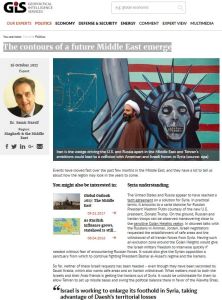Join getAbstract to access the summary!

Join getAbstract to access the summary!
Samir Nassif
The Contours of a Future Middle East Emerge
GIS, 2017
What's inside?
Minority aspirations and Iranian expansion threaten the integrity of the Middle East’s state system.
Recommendation
Volatility has afflicted the Middle East since the formation of its contemporary state system in the wake of World War I. But as geopolitics and leadership expert Samir Nassif argues in this cogent analysis for Geopolitical Intelligence Services, cultural and religious differences among the peoples of the region have become so pronounced that the Middle East’s arbitrarily drawn borders may not be able to stand much longer. In 2017, an increasingly powerful and expansionist Iran, heightened tensions between Iran and the United States, and Kurdish independence moves are combining to bring the Middle East to the verge of unraveling.
Summary
About the Author
Samir Nassif teaches management at the University of New York in Prague.
















Comment on this summary